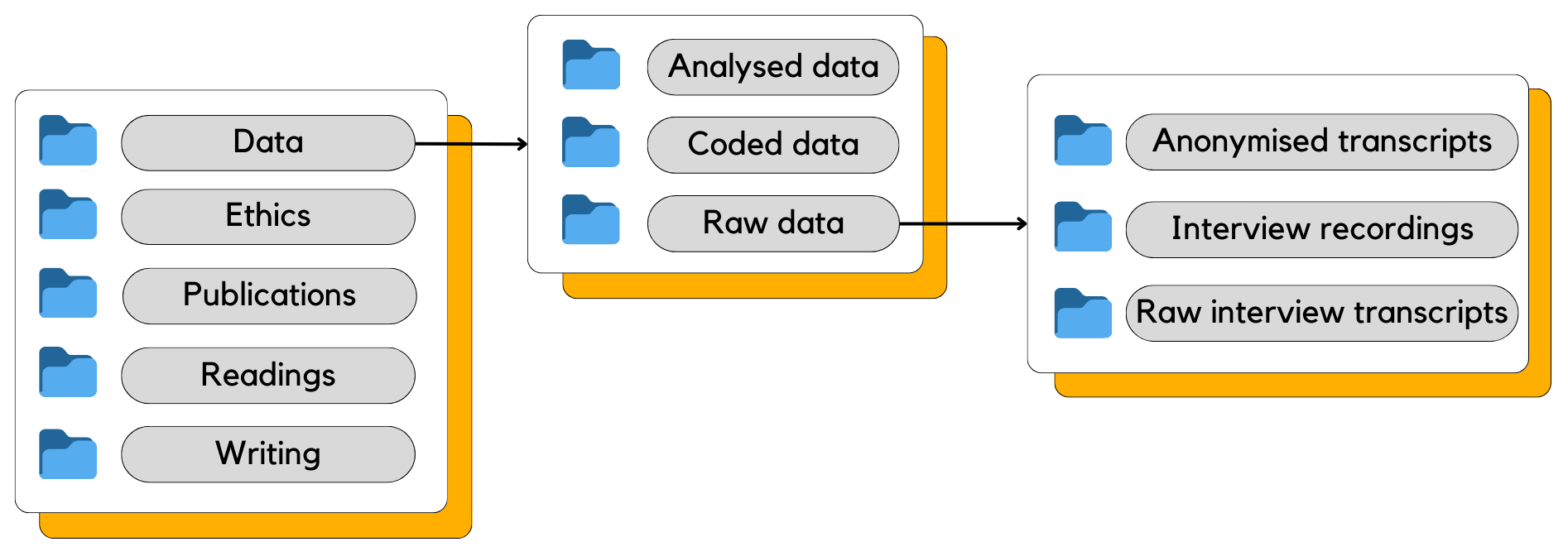Organising your content

A research degree is a complex project with many facets. In addition to managing your time and tasks, it can also be helpful to keep track of all your ideas and resources. Developing an effective system early on can make the process much less daunting.
Organising your ideas
Ideas book – The best ideas may come suddenly when you are away from your desk, waiting for a friend or commuting on the train. So, keep an ideas book, physical or digital, with you to jot down those thoughts.
Mind map – Mind mapping is a commonly used method to organise ideas. Mind maps can be a valuable tool during the brainstorming process as a first attempt to organise your ideas and further developed into planning documents, helping you map out the structure of your text.
Graphic illustrations – Sometimes when our ideas don’t hold together, drawing the problem can be helpful.
Outlines – Scrivener is a word processing program that helps you create outlines and manage documents and notes. It is a useful tool for organising your thesis and can export to Word for final formatting.
Organising your notes and resources
As we think through writing, it is advisable to make notes and summarise texts while reading. Here are some tools that can assist you in organising your written notes and resources.
Matrices – A matrix is a useful table to capture the literature and help you to analyse and synthesise existing research. The Organising Ideas in the Body of your Literature Review chapter demonstrates how the rows and columns of a matrix can be customised to represent different relationship patterns across the reviewed literature.
Index cards – Building an index card system is a useful way of organising your notes, with each piece of useful information written on an individual card. This allows for easy rearrangement and categorisation of information, making large amounts of notes more manageable.
Online tools – Online tools like EndNote, Zotero, and Mendeley can assist you in managing bibliographic data and research materials. Refer to the Choosing a reference manager module to explore the features of these three popular tools.
Organising your computer
Some strategies that might be used for computer organisation include:
Structuring file folders effectively – Begin with a limited number of folders for broader categories and then create more specific folders within them. It is helpful to categorise ongoing and completed work into different folders and clearly name your files to indicate whether they are in progress or the final version.
Example: Hierarchically structured folders

(Copyright © 2024 RMIT University)
Naming your files – Choosing a logical and consistent way to name your files is a key component of effective data management, saving you time and effort when working with a large number of files. This is crucial in maintaining an organised digital workspace. Think about including relevant details in your file names, such as the date, version number and a brief description of the content.
Activity
Backing up your files – Backing up your files regularly, whether they are on your local drive or on a network drive, could safeguard your work in cases of computer failure, accidental file replacement or accidental deletion. You might consider using several backup methods, such as an external hard drive or cloud-based services, to enhance the security of your data. Moreover, it’s recommended to check your backups periodically to ensure they are working as intended.

